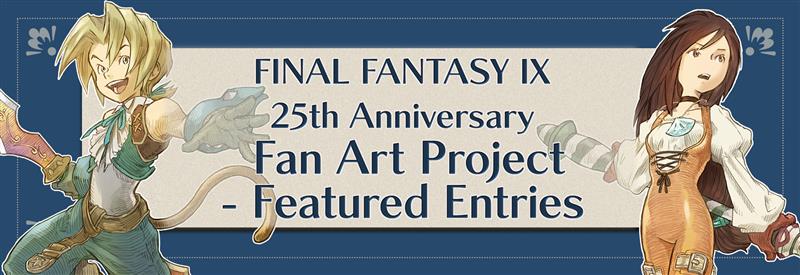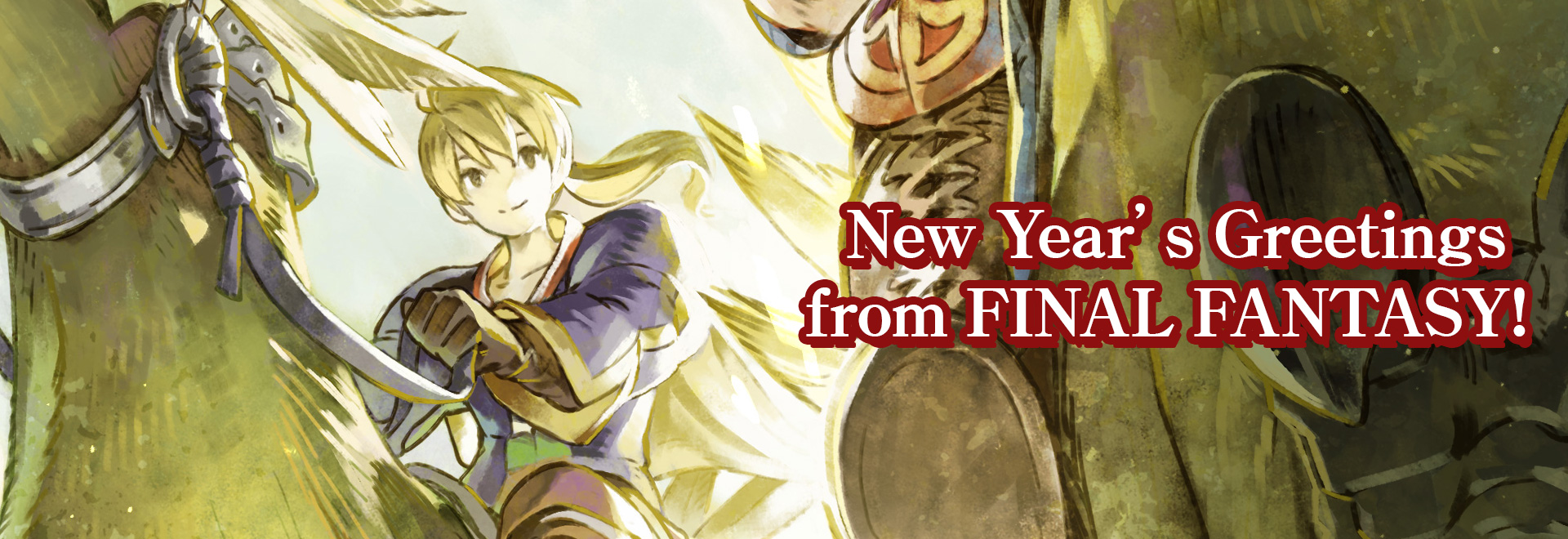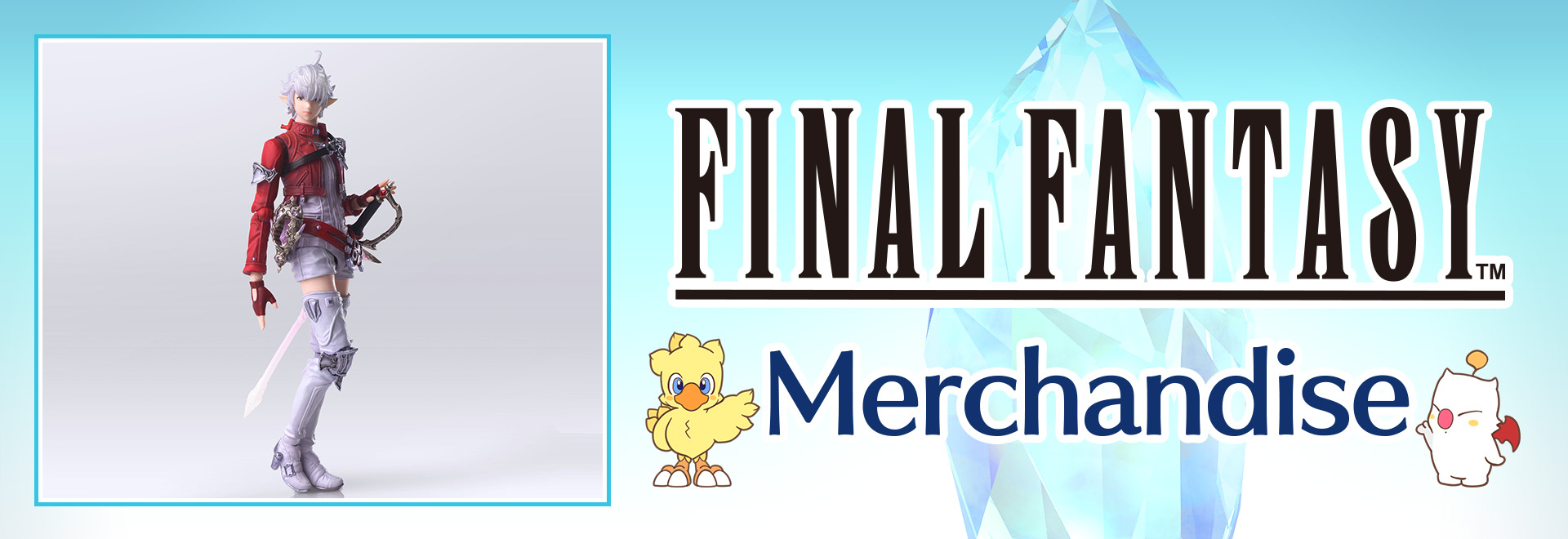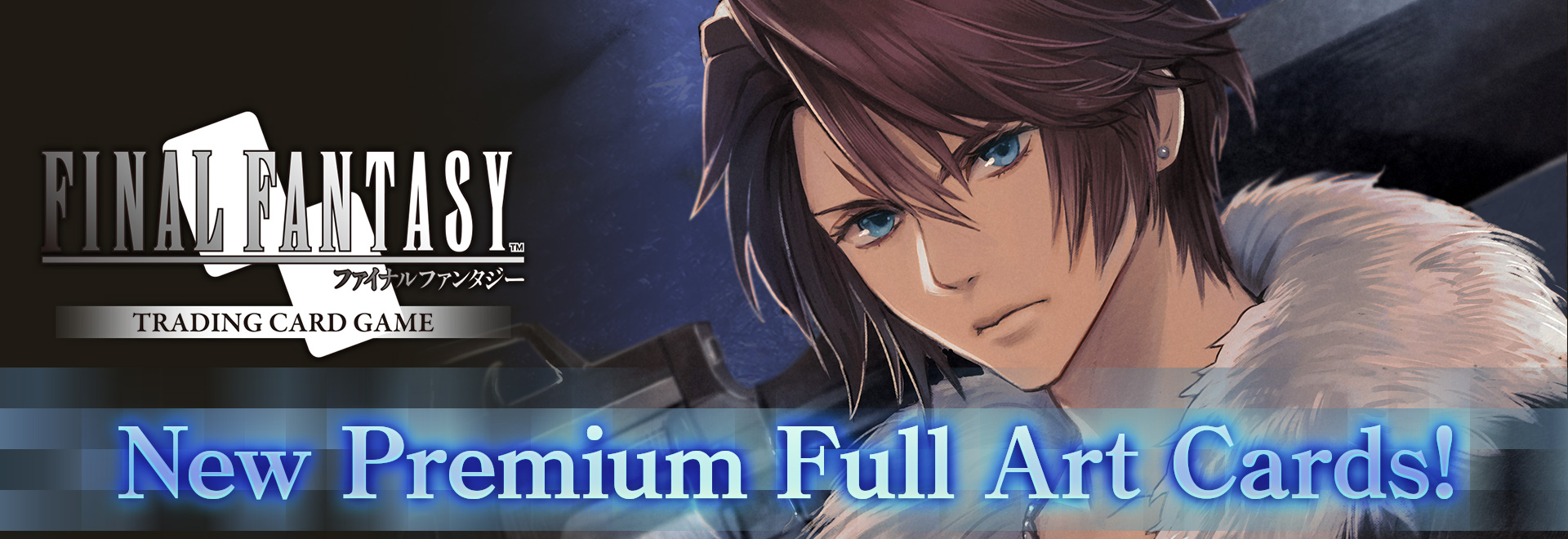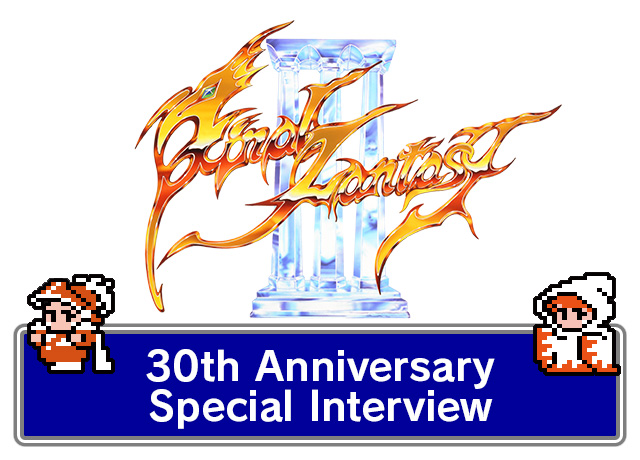
This article was published in 2020.
April 27 marks 30 years since FINAL FANTASY III was released! We interviewed Hiromichi Tanaka and Koichi Ishii, two game creators who have extensive knowledge about FFIII’s creation. Recollections of FFIII’s development, behind the scenes secrets – you’ll get lots of info here you can’t find anywhere else!
For part two, we spoke with the father of the chocobo and moogle, Mr. Koichi Ishii, about how he came to be a part of the FINAL FANTASY series and his involvement in FINAL FANTASY III! You can read part one of the FFIII 30th Anniversary Special Interview with Mr. Hiromichi Tanaka here.
Koichi Ishii Profile
Game creator involved with the FINAL FANTASY and Mana series of games. Currently the CEO and president of GREZZO Co., Ltd. while continuing to ambitiously involve himself in game creation.
―First, we’d like to ask how you came to be involved in the FINAL FANTASY (hereafter FF) series of games.
Ishii: After joining SQUARE, the first proper project I did planning for was FFI. It started when Mr. [Hironobu] Sakaguchi said he would be making an RPG like DRAGON QUEST, and came to me saying, “Ishii, you do the project planning!” Despite that, at first Mr. Sakaguchi and Mr. [Akitoshi] Kawazu were busy with Rad Racer, and Mr. [Hiromichi] Tanaka was on a different team as well. I worked on the project by myself for a while, at which time I prepared what would become the core concepts of FFI:
- Implementing the idea of elementals that hadn’t been in games up to that point like fire, water, earth and wind into the game universe.
- Giving a sense of three-dimensionality to the feel of the game world, with a diorama-esque world map, characters that felt like walking painted metal figurines, and a sense of height and depth through airship-like vehicles that cast shadows on the ground.
- Creating original characters of one’s own design.
- A side-view battle system that made dynamic action battle possible through characters whose expressions change based on the situation they’re in.
- The title card shown after the prologue ends, similar to in movies.
- The first boss you fight actually being also the last boss of the game, and the final dungeon being a return to the first.
Those were the kind of concepts I came up with in the plan I constructed during my time working on the project alone.
―So that’s where the beginnings, the base of the FF series was created.
Ishii: People often get the wrong impression because I designed the chocobo and moogle, but I’ve never once been a graphic designer, not even in title. Project planning has been my main responsibility since my very first days after joining SQUARE. [laughs] But I am the type to visually explain the world I want and use drawings when putting together projects. So people think I only do graphic design, but I just drew character art and input pixel art designs myself because I was never able to get emotionally invested in the characters and pixel art that I had previously played as in other games and media.
When I imagine what kind of game I’m going to make, I envision in my head how things are going to move as a picture, so my style as a planner is for what ends up on the game screen to be close to what I envisioned. For example, in FFI the reason the mountains were white was because I envisioned that the rocks making up the mountains had crystal shards in them, and those shards sparkled from the reflection of the sun’s rays. That’s why the mountain’s surface was portrayed as white.
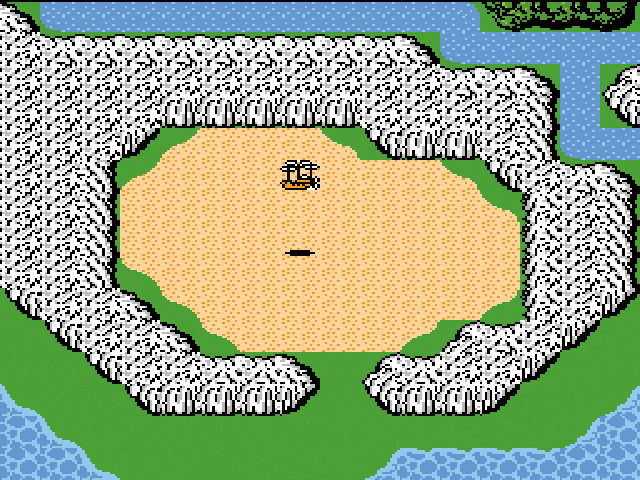
Games at that time were played on cathode ray tube (CRT) TVs, and if you put black dots in a plot of all white, it would bleed together on the CRT screen giving you light blue or pink showing up around the black dots. The NES had a limited number of colors, and we wanted to give the illusion of even just the slightest bit more colorfulness. We used tricks like putting black streaks in the white mountain surface to achieve that.
―It seems like getting the result you envisioned on limited hardware took some creativity.
Ishii: I think that’s all just part of a project, figuring out which methods and ideas you want to use to get your vision across.
Viewing those same black and white mountains on an LCD screen now looks different from what we intended when the game was developed, since we input that pixel art to make use of the blurring and warping that occurs when displayed on a CRT screen.
Today pixel art is just one form of expression and can be a way to stir up nostalgia, but I feel that back then we were trying to find ways to create an illusion for the player.
―That story really lets you feel the FF series’ meticulousness for how things are conveyed to the player.
Ishii: Speaking of meticulousness, during FFI’s development, I was very picky about the characters. I was full of this drive to invent new character pixel art that hadn’t been seen in games before. When I plan a game project, the characters in the story start as moving characters in my head.
At the time I joined SQUARE, input for character sprites was left up to Ms. [Kazuko] Shibuya, who had the complete trust of Mr. Sakaguchi. I think the character sprites in The 3-D Battles of WorldRunner and Rad Racer are pretty representative of “Shibuya character pixel art” at the time. In other games, too, one pixel for each eye and one pixel sticking out for the nose was the norm. There was a tendency for that to just be the standard for game characters in graphic design back then.
It’s specifically because of that thinking that one thing I had in my head during FFI’s development was, “I have to invent a new kind of character pixel art!” But I had no experience inputting character sprites nor had I ever touched the tools for that, so I just got started figuring I’d do the characters when I input the side-view battle display on the game screen from my rough sketch.
Ms. Shibuya was busy with the development of Rad Racer, so I earnestly requested to Mr. [Takashi] Tokita, “I want to put this on the screen, help me out,” and that’s when I learned how to input pixel art. Although I lost the first image data I made because I didn’t save it right. That was quite a way to start things off. [laughs]
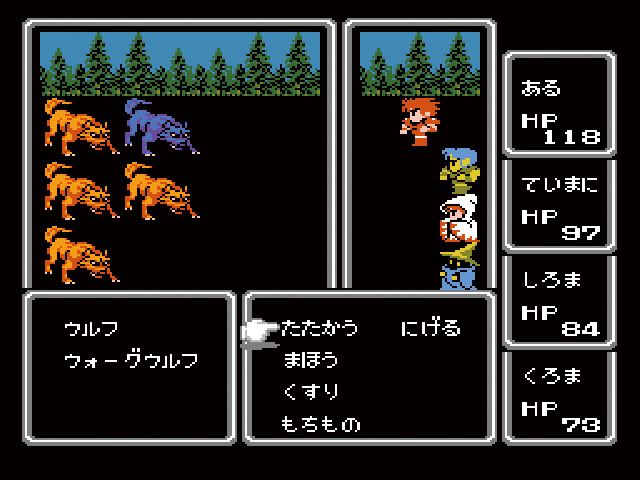
I was truly happy to see the characters whose pixel data I had input myself animated, and that’s also the moment the FF job characters were born. When I showed Mr. Sakaguchi the side-view battle screen I had finally completed, he said, “Hey, this is really good. Let’s do the characters in the same way!” So I created a base design for the character sprites and handed the job over to Ms. Shibuya. However, there were always parts of the final result that didn’t feel quite how I had pictured it, so while I knew it was rude of me to do so, I re-input the sprites myself at night. I guess I had a very specific image in my mind of how I wanted those characters to be, and even one pixel was a compromise I just wasn’t willing to make.
―Now let’s move on to the main topic. How did you end up involved in FFIII?
Ishii: I was on the team for Makai Toshi Sa・Ga [first title in what is now the SaGa series; released as THE FINAL FANTASY LEGEND in North America] when FFIII’s project started.
At the time Nintendo had plans to release the Game Boy. SQUARE ended up as one of the companies that was going to make a new title for it, and Mr. Sakaguchi called us in and said, “Kawazu, Ishii, one of these days you should get the experience under your belt of having a project fail.” Mr Sakaguchi may have thought the Game Boy wasn’t going to do well, but Mr. Kawazu and I were simply very excited to be able to make something new that wouldn’t be FF.
―I see. And what brought you to join the FFIII team from there?
Ishii: One day, Mr. Sakaguchi came to me and asked me to create the FFIII
job characters.
I turned him down initially because there was already someone else handling the job characters and I was on an entirely different team. However, he had asked me several times so I eventually I said yes, although with conditions. I was fine with doing the job characters, but only if he let me handle the battle scene character design, sprites and animation all on my own. I made that very clear. Those conditions were because I didn't want a mixture of several different artistic styles in the job characters' design and pixel art. And he responded, “No, that’s perfect, do it all.” [laughs]
So NPCs designed by Mr. Amano were input by the person in charge of characters, and that same person created the job character sprites that walked on the world map based on my character pixel art.
―Wow, so you were now in charge of all the FFIII job character designs, which there also happened to suddenly be many more of than in previous games.
Ishii: Yes, and when I first asked what was being done for FFIII’s jobs, they were trying to figure out how to distinguish between all of them by assigning each job different equipment and their own magic.
That would have made it hard to understand what makes each job unique. There was no reason to have so many jobs in that case and I couldn’t get an image of the job character’s designs from that, so I suggested an idea to give the jobs some individuality. My proposal was, “I think we should give each job an exclusive command, like ‘guard’ for knight or ‘steal’ for thief!” to which Mr. Sakaguchi said, “That’s it!” and with that the way jobs work was settled. [laughs]
That’s how the roots of the FF job abilities everyone uses like second nature now came to be.
―So while we say job design, it was not only the visual aspects but also included designing game systems as well.
Ishii: Yeah, that’s how it ended up. Everyone did all kinds of jobs back then. I mainly took care of project planning and drumming up new ideas – Mr. Sakaguchi, Mr. Kawazu and Mr. Tanaka told me not to handle much work that required fiddling with data. I believed that was how to best make use of my skills and did my work as requested, but I also felt conflicted - perhaps my work would be better appreciated if I handled data myself. Thinking back, though, if you’re planning while also handling data, the ideas you can come up with are limited by how well you can manipulate that data, so I think it was the right decision for me to be mostly hands-off on data.
―Is there anything about the visual design of FFIII that’s particularly memorable to you?
Ishii: As for the jobs, the NES displayed sprites using three colors but in my mind I had this feeling that I can’t make a believable design if I haven’t really dug deep into the job’s background story and what kind of character it will be. One thing that really left an impression on me was when I saw the job character designs in FINAL FANTASY TACTICS - the white mage’s robe was portrayed as white cloth with thick red zig-zag triangle designs on it. I thought, “Could it be that everyone thinks that’s what the white mage looks like!?”
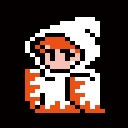
The image I had is that the red part of a white mage’s robe is embroidered from red threads imbued with magic when spun together, increasing the wearer’s magical power. The reasoning for the red threads being on the sleeves is that magic leaves the body through the hands and wrists, so that area is most effective. I was very particular about the lore that equipment like wands and amulets are used as a catalyst to turn natural power into magic, stimulating the user’s magic strength. That’s why I was adamant about never giving magic users iron equipment; if they use normal metals, their magic power will disperse so at least go with mythril ore...stuff like that.
There’s others, for example in FFIII I believe there’s the dark knight job, and when they’re KO’d in battle only their armor is left, as if the body inside has disappeared. The reason for that, in my imagining, is that they have a dark pact where their body is engraved with dark magic runes, and when they’re KO’d the dark magic runes take their soul and body so only the empty armor remains. I had that kind of unique image for each job as I was creating it.

―So it wasn’t just simple design, the jobs were based on behaviors and backgrounds that you were giving them.
Ishii: Indeed, while making the jobs I made sure to have various meanings behind my design choices so I wasn’t just playing dress-up with them. I think considering those kind of details while inputting job character sprites was one part of project planning for FFIII. Through this character, you’re creating what kind of story you want to tell, what impression you want to leave on the player. But on NES you had a small number of colors to choose from, so there was an element of fun to it almost like doing a puzzle. [laughs] There was a rewarding aspect, similar to inventing, in trying to see how much you could express in the midst of all these limitations. It was fun to make these discoveries on your own like, “Hey, you can get this visual if you arrange the pixels this way.”
A discovery I was proud of at the time was black mage’s combination of the colors bright golden yellow, khaki and light blue. I was absolutely determined to use those colors. The “white, red, skin color” characters like the warrior, white mage and red mage were easy to make, but there was no simple way to come up with palette variations for the other characters. While you had three colors to use, one had to be used up for skin color - if you stuck with that thinking then you only had two left, and there was a limit to what you could do with that. So I came up with using bright golden yellow in place of the typical skin color. The bright golden yellow, khaki, and blue color palette came through trial and error, and that became the black mage, monk and thief.
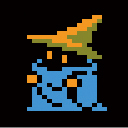
―There were so many jobs in FFIII - did you struggle to come up with ways to differentiate between them?
Ishii: I designed over half of them while inputting the sprites so yes, it was indeed tough to differentiate between them. However, I was doing this work thinking it would be the last time I do pixel art, so the task didn’t feel tiring.
Giving every job a different pose came from my attachment to them, I absolutely didn’t want to reuse anything. When I was really in the zone, I would be constantly comparing each job to all the others and striving to implement clear differences between them, imagining how the job characters’ adventures were going as I continued inputting sprites. Because of that, completing each job sprite had this feeling of accomplishment like finishing a piece of art – every one was packed with these stories I had come up with, and it was a moving experience to finish each of them. That was also the point that I decided I wouldn’t ever design job characters again.
And so, I’d never do another FF character after FFIII. That’s also the reason I didn’t do job character design for FFV despite Mr. Sakaguchi asking me to.
―It feels like having the character sprites in FF face diagonally made their movements easier to see and understand.
Ishii: I think that diagonally facing characters do have more of a presence. Being able to feel that presence makes you more likely to get attached to the characters.
In FFIII, I wanted to give more of a figurine look to characters so I increased the number of them facing a little to the side. For the most part the animations were from a directly horizontal angle, but the characters were surprisingly three-dimensional. I think they looked good.
The standard for RPGs at the time was from the player’s perspective, where you could see the enemies but not the player character. I came up with FF’s side view battle because I wanted to give a wider view of battles, letting players watch over their characters and get more emotionally attached to them.
I tried to think of what kind of poses would make players want to save their characters when they’re hurt or in danger, and I figured falling on their knees would do the trick. That pose makes you go, “Oh no, I have to save them,” right? I think the personalities of each job come out in those poses. I’d say that coming up with poses and expressions for characters was something I was constantly working at to give them more of a presence on screen.
―We think the onion knight job, both the character and that name itself, is one symbol of FFIII – but did the name come first?
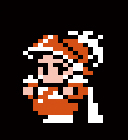
Ishii: I think the visual was first, without a name. When I thought of doing a “normal” job type, I imagined something roly-poly, almost like a baby. If you look at the onion knight’s outfit, specifically its pants, you’ll see that it’s just wearing shoulder armor over a little round diaper-like thing. And on its helmet, there’s a puffy ornament that’s worn by knights and guards – I think that’s where the image of an onion came from; it looks like an onion stalk bloom. I want to say that Mr. Tanaka gave it the name onion knight, although I don’t really remember. [laughs] I can recall wanting to show it as younger than the other jobs. Onion knight was the first character I tried creating a diagonally-facing sprite for.
―You’ve told us a lot about the jobs in FFIII. Which is your favorite?
Ishii: Each one took so much work, I’m really attached to everybody. Amongst all of them, I suppose onion knight is the one I like most.
FFIII was the first time using a palette that included bright yellow-green, and that might have given the game more of a bright, rich aesthetic. It was so much fun creating the characters that used that palette. You could really feel that they were new jobs, and they looked great.
Speaking of, I remember doing some job character illustrations for the FFIII strategy guide. I did them because Mr. Sakaguchi asked me to, and when the guide was released people who saw it were asking who did the job illustrations. FFIII’s development was already over when I drew those, and I believe that I had just started work on FINAL FANTASY ADVENTURE. I think those illustrations did an excellent job of portraying the characters.
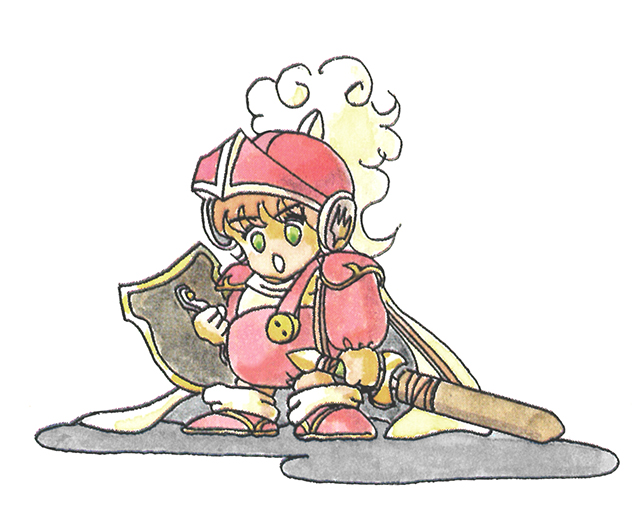
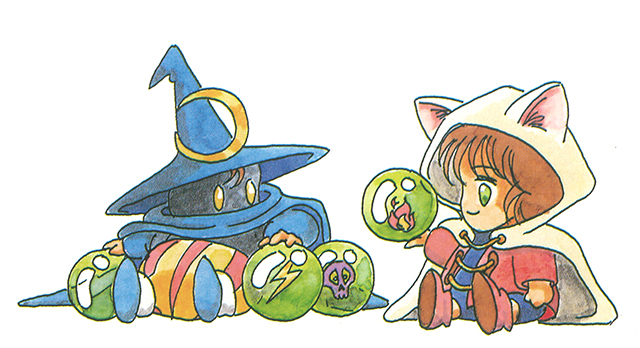
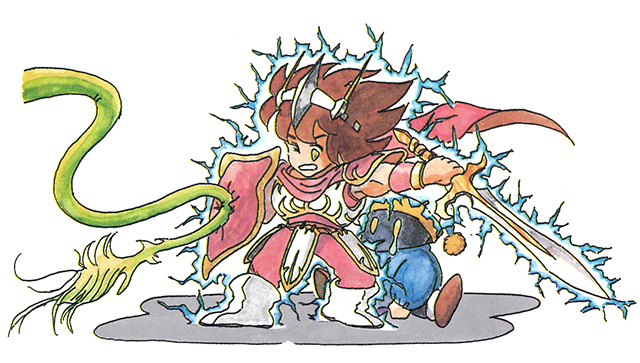
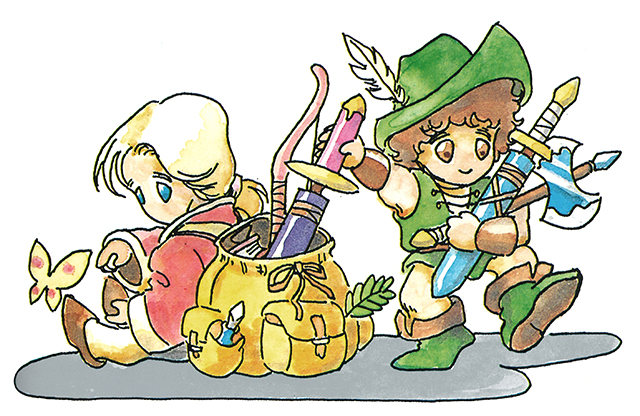
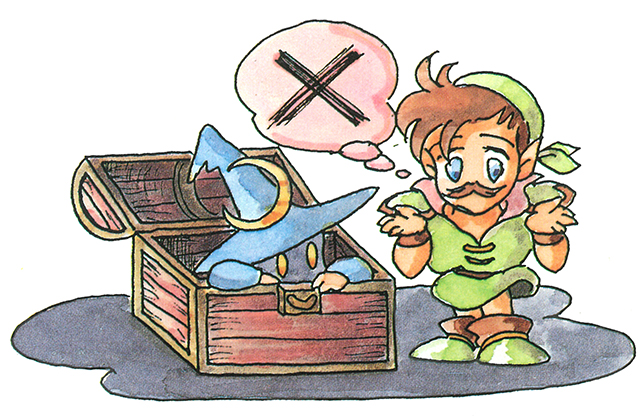
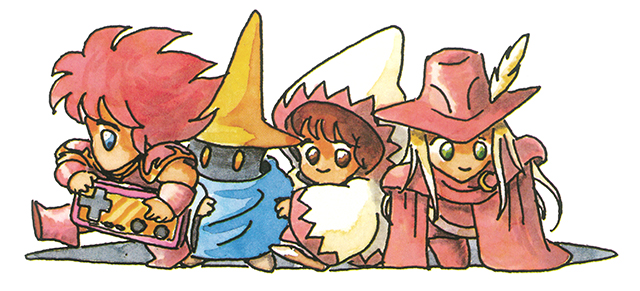
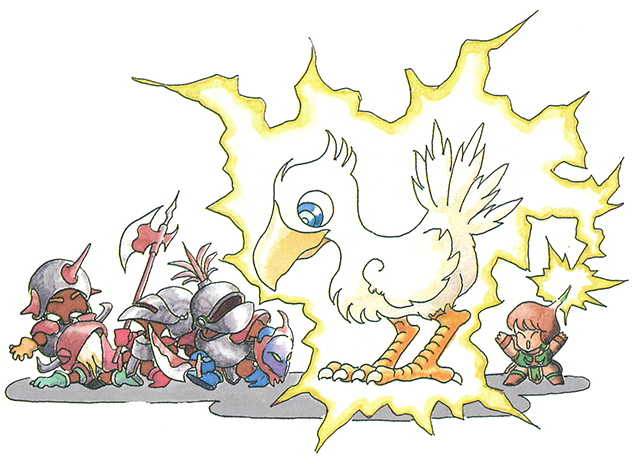
―One of the characters that made its first appearance in FFIII was the moogles. You’re the creator of moogles, correct?
Ishii: Well, the one who actually created moogles was me as an elementary school student. [laughs]
I made the character when I was in elementary school, at which time I was drawing all kinds of fantasy creatures and the like. I liked koalas, and also animals that weren’t so popular like frilled-neck lizards. But I especially liked koalas, so I’d draw koala-like creatures that were all white, similar to what was in the strategy guide I mentioned, bat-like things that were clinging to the ceiling, that kind of stuff. [laughs] White koalas with wings like a bat, but they can also blow up their body and float around. Those wings are for controlling direction in the air, not flapping around to fly.
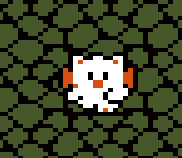
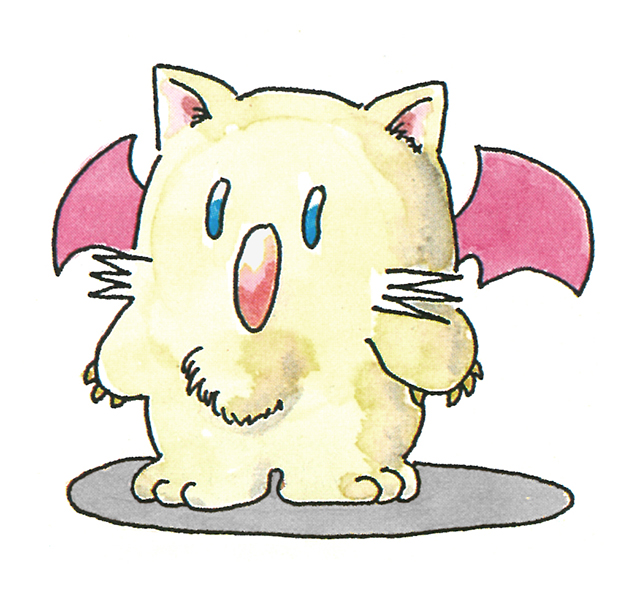
―That makes moogles a character that’s essentially a combination between a koala and a bat, then.
Ishii: That’s the physical make up of them, yes. That’s also why they have a big nose and so on.
But it’s clear that they’re not simply just koalas. At first I wanted to make them like a koala, but they’re not only koalas by any means. So if someone makes a moogle that’s basically a koala, I think it would be something else entirely from the moogle I initially thought up. Although lately there have been moogles of all shapes and sizes. [laughs]
―Did you decide the sound that moogles make?
Ishii: I’m pretty sure I wasn’t the one who wrote the lines for moogles. The person in charge of writing lines in FFIII just ended up giving moogles that voice, I think. Never in my wildest dreams did I imagine that they would end up treated as this huge mascot character.
―Chocobos can’t speak, but the fact that moogles can may have been one secret to their popularity.
Ishii: Hmm...I think moogles speaking was just an issue of convenience. [laughs]
Probably to do with how things wouldn’t progress without a party to do the talking. When I created the moogle, I didn’t imagine it being that talkative. Originally in my mind there was chocobo, moogle and one more character, and they each had their own role in a sort of interdependent three-way relationship. Although I ended up not putting the third character into the game... I made them hoping to eventually get the three of them on an educational TV show or something together, that’s what my original goal was. [laughs]
Chocobo, for example, wouldn’t say anything but would be very animated, showing emotions like anger through movement and demeanor – very true to its feelings. Moogle would be the spacey one, easygoing and sometimes showing a flair for comedy where it’s the butt of the joke. I was planning for the last character who didn’t make it into FF to be the loud talkative type, but since it wasn’t included, the moogle became the one who talks in the end. [laughs]
―When moogles became pixel art, was it as you imagined it would be?
Ishii: I input that pixel art myself, so I feel that the sprite absolutely portrayed the character well. Although I’m pretty sure that was the first time a moogle was done in color. The number of colors available on NES wasn’t much, but I had an image in my mind that the moogle was white and purplish red and I believe my drawing in the FFIII strategy guide should be in those colors as well. However, that puffball on its head was put there by Mr. Amano; the request for him to draw a moogle came back and there it was. I was surprised when I first saw it, but I think it’s a nice accent - I imagined the moogle blowing up that puffball and carefreely floating around.
―Was there anything from your time working on FFIII that impacted your work later on?
Ishii: I’m gonna have to say I got a strong sense of self awareness that I wanted to make something other than FF. [laughs]
It’s not an issue of FF being good or bad, but as a creator I started to feel that my job is making the basis and format for new games. I gained a desire to create something entirely different. It’s more fun to make something different on every project, or maybe I should say it was more fulfilling to forge paths where there are none.
When making the Mana titles, that attitude was deeply reflected in the games, and aspects like the series’ worldview stayed rooted throughout the series while still changing the themes, mechanics and gameplay.
―Later on, you were involved in the FF series again as FFXI’s director.
Ishii: I turned down joining the FFXI team many times but Mr. Sakaguchi convinced me to say yes, so for the first time in a very long time I developed an FF game. [laughs]
In FFXI, I feel that we got pretty close to the FF I had envisioned. I think you can get an understanding of the FF I wanted to create when I first did project planning for the series by looking at FFXI. With the tools we had available at the time, I’m pretty confident we pushed the limits of what I imagined FF could be. I’m glad I joined the project.
―And now, we’ve come to our last question. What is FF to you?
Ishii: FFI and FFXI were both being developed when the company was in a rough situation, so I think my mindset at the time was one of resolution to make something interesting no matter what. FF taught me that your resoluteness can greatly change the works you create, and for that I am truly very thankful.
FF players also come from different generations, where some may know the older titles but not the new ones, or others may know current FF games but haven’t played the ones from early in the series. That’s true of the people who create FF as well. But you’re all together in your enjoyment of FF, so I hope both the creators and players will maintain their passion for the series, and furthermore that everyone’s love of FF will keep it shining brightly for a long time to come.
―Thank you for your time today!


